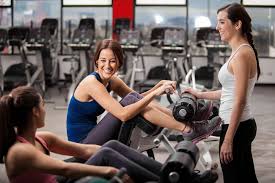Fitness culture in Australia is more than just a lifestyle trend—it’s a national identity woven through its sun-soaked landscapes, vibrant communities, and a deeply embedded love for health and well-being. Whether it’s a beachside bootcamp at sunrise, a lunchtime Pilates session in a boutique studio, or a mindfulness session guided by an influencer from the comfort of one’s home, Australians are redefining how fitness fits into daily life. The country’s fitness culture is dynamic, inclusive, and increasingly tech-savvy, embracing both ancient practices and futuristic trends. Across the nation, fitness isn’t confined to gyms—it flows through coastal walks, park workouts, digital apps, and multicultural movement traditions that make Australia one of the most active nations globally. According to Fitness Australia, over 6 million Australians participate in structured fitness activities weekly, a testament to the strength of this ever-evolving culture.
In cities like Sydney, Brisbane, and Melbourne, outdoor fitness reigns supreme. The country’s temperate climate and extensive network of public spaces invite individuals and communities to step outside and get moving. From the Bondi to Coogee coastal trail to sprawling green havens like Melbourne’s Royal Botanic Gardens, exercise in Australia is as much about connecting with nature as it is about physical strength. Free community-led sessions, such as those offered by Live Life Get Active, are booming—creating inclusive spaces for people of all ages and fitness levels. These sessions don’t just improve health; they cultivate connection and mental well-being, a factor that organizations like Beyond Blue highlight as critical in modern health discussions.
Simultaneously, the rise of boutique gyms and wellness studios is transforming urban fitness experiences. Companies such as F45 Training, which originated in Sydney, have turned high-intensity group workouts into a global phenomenon. Australians are also increasingly turning to personalized and holistic approaches, seeking out spaces like KX Pilates or wellness centers that integrate yoga, breathwork, physiotherapy, and nutrition guidance. The demand for customized, results-driven routines has made fitness a more conscious and connected endeavor, especially in metropolitan hubs. According to the Australian Fitness Industry Report, boutique studio memberships have surged by over 30% in the past five years, reflecting a shift towards intimate, community-centric training.
Technology, too, is rewriting the rules of engagement. Fitness apps, wearable trackers, and digital programs allow Australians to train on their own terms. Influencers like Kayla Itsines, whose Sweat platform has millions of global followers, exemplify how social media now drives fitness culture. Major gym chains such as Goodlife Health Clubs and Fitness First Australia have adopted hybrid models that blend in-person and virtual classes—ensuring accessibility and flexibility for every lifestyle. These tech-enhanced experiences help users track their progress, set goals, and stay inspired, contributing to a well-rounded health journey.
With roots in outdoor adventure, enhanced by multicultural expression, and propelled by digital innovation, fitness culture in Australia is a multifaceted phenomenon. It speaks to the nation’s evolving values—prioritizing well-being, inclusivity, and resilience in every step, sprint, stretch, and screen tap.
Outdoor Fitness and Australia’s Love for Nature
Embracing the Outdoors Year-Round
Australia’s mild climate and breathtaking landscapes make it an ideal setting for year-round outdoor fitness. According to the Australian Sports Commission, over 60% of Australians engage in outdoor physical activity at least once a week. This includes running, hiking, cycling, swimming, and functional training in open-air environments. From Bondi to Byron, beach workouts and ocean swims are deeply woven into the fabric of fitness culture in Australia.
Parks, Trails, and Coastal Walks
With over 500 national parks and thousands of walking trails, Australians have endless access to green spaces. The 10-kilometre Bondi to Coogee coastal walk in Sydney sees more than 2 million fitness enthusiasts each year. The country’s investment in maintaining walkable cities and nature paths significantly contributes to promoting physical well-being.
Community Workouts and Free Bootcamps
Cities like Melbourne and Brisbane offer free community bootcamps, yoga sessions, and strength classes in public parks. Programs such as “Live Life Get Active” host over 150,000 free fitness classes annually across 250 locations. These social group workouts have become a cornerstone of fitness culture in Australia, fostering connection and motivation.
Surf and Sport as Lifestyle Choices
With more than 85% of Australians living within 50 kilometres of the coast, surfing and beach sports are more than just hobbies—they’re part of life. The Australian Bureau of Statistics (ABS) notes that over 500,000 people surf regularly, while beach volleyball and paddleboarding continue to gain popularity.
Government and Local Council Support
Local councils across Australia actively promote outdoor fitness by developing fitness trails, installing calisthenics equipment, and sponsoring fitness events. For example, Sydney’s Centennial Park features open-air gyms and dedicated running circuits, making it a model for urban fitness integration.
The Rise of Boutique Gyms and Wellness Studios
Tailored Experiences Over Big Chains
While traditional gyms still have a presence, boutique fitness studios now dominate the urban wellness scene. The fitness industry in Australia was valued at AUD 3.4 billion in 2023, with boutique gyms accounting for nearly 40% of that market share. This shift reflects a broader change in fitness culture in Australia—one that values personalized, community-driven experiences.
Popular Specializations and Trends
Studios offering reformer Pilates, high-intensity interval training (HIIT), barre, spin, and functional training are leading the trend. Brands like F45, founded in Sydney in 2011, have exploded globally, boasting over 2,000 studios across 60 countries. In Australia alone, F45 serves more than 500,000 active members.
Membership Growth and Retention Rates
IBISWorld data shows that boutique studios have a higher retention rate (76%) compared to traditional gyms (52%). The intimate class sizes, customized programs, and community feel contribute to higher engagement levels. This evolution in fitness culture in Australia supports both mental and physical health through deeper connection and accountability.
Integrated Wellness: More Than Just Fitness
Modern studios now offer a range of services—from nutrition counseling and physiotherapy to meditation and sound healing. This shift aligns with Australians’ increasing focus on holistic wellness, which grew by 12% annually between 2020 and 2024, according to the Global Wellness Institute.
Technology-Enhanced Training
Many boutique gyms use performance-tracking apps, wearable tech, and real-time data to optimize results. Studios like Body Fit Training and KX Pilates use screen-displayed metrics and app-based progress tracking to keep clients motivated and informed.
Cultural Diversity and Community-Based Fitness Trends
Multicultural Participation in Fitness
Australia’s rich cultural diversity shapes its fitness scene. With nearly 30% of the population born overseas, fitness offerings have expanded to include culturally specific practices. In cities like Melbourne and Sydney, you’ll find Brazilian capoeira, Indian Bollywood dance, and Chinese tai chi classes that reflect the multicultural roots of fitness culture in Australia.
Faith and Female-Friendly Fitness Spaces
Community gyms catering to Muslim women or people from culturally sensitive backgrounds have grown significantly. Gyms like Fernwood Fitness offer women-only spaces and services tailored to cultural preferences. In 2023, more than 120 culturally inclusive fitness initiatives were funded by local councils across Australia.
Fitness as a Tool for Community Building
Initiatives such as “Parkrun Australia” and “Active Multicultural Communities” support group fitness events aimed at social cohesion. Parkrun alone organizes 450 free weekly 5K runs across the country, drawing in over 700,000 registrants from diverse ethnic backgrounds. These programs are reshaping fitness culture in Australia by promoting inclusion and unity.
Language-Specific Coaching and Workshops
Many fitness centers now provide services in languages such as Mandarin, Arabic, Hindi, and Vietnamese. In Western Sydney, over 30 community centers offer fitness classes in multiple languages, fostering accessibility and deeper community engagement.
Celebrating Cultural Movement Practices
Events like Harmony Day and Multicultural Health Week feature public classes in traditional forms of movement, from African dance to Filipino martial arts. These cultural showcases highlight the fusion of tradition and fitness and demonstrate the inclusive character of Australian fitness spaces.
Digital Fitness Revolution: Apps, Influencers, and Virtual Workouts
Explosion of Fitness Apps
Australians have embraced digital fitness like never before. A 2024 survey by Statista found that over 6.8 million Australians use fitness apps regularly. From workout guidance and meal planning to mindfulness tracking, digital platforms are an integral part of fitness culture in Australia today.
The Influence of Fitness Personalities
Australian fitness influencers like Kayla Itsines and Chloe Ting have become global icons. Kayla’s “Sweat” app alone boasts more than 50 million downloads worldwide, with a major portion of users located in Australia. These personalities are shaping habits, especially among Millennials and Gen Z.
Hybrid Models and Virtual Training
Many gyms now offer hybrid memberships that include in-person and online classes. Brands like Fitness First and Goodlife Health Clubs stream over 1,000 live and on-demand sessions monthly. The Australian Fitness Industry Report 2023 stated that 46% of fitness consumers now prefer the flexibility of virtual options.
Social Media and Daily Fitness Habits
Instagram and TikTok have turned fitness into a visually-driven, shareable experience. Hashtags like #fitspo and #homeworkoutsAustralia have accumulated millions of posts, proving that visual motivation is a driving force in the modern fitness culture in Australia.
Wearable Tech and Progress Tracking
Fitbit, Apple Watch, and Garmin usage has surged, with over 5.2 million Australians owning a fitness tracker in 2024. These devices promote consistency by tracking heart rate, steps, calories, and sleep—reinforcing a culture that values data-informed progress and personal health awareness.




